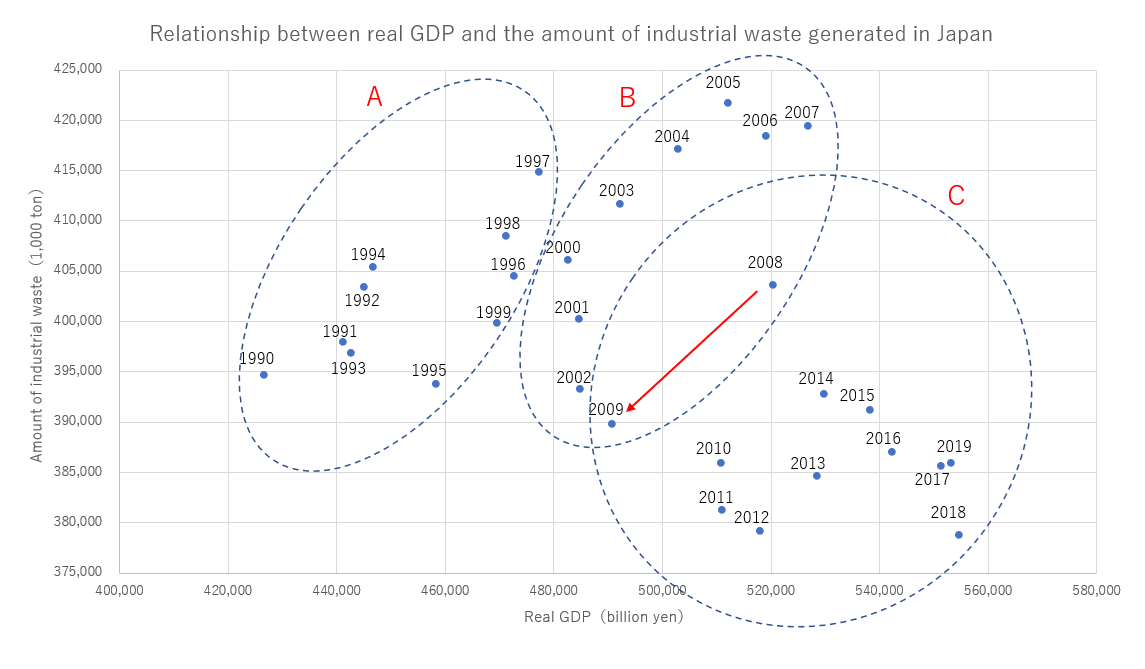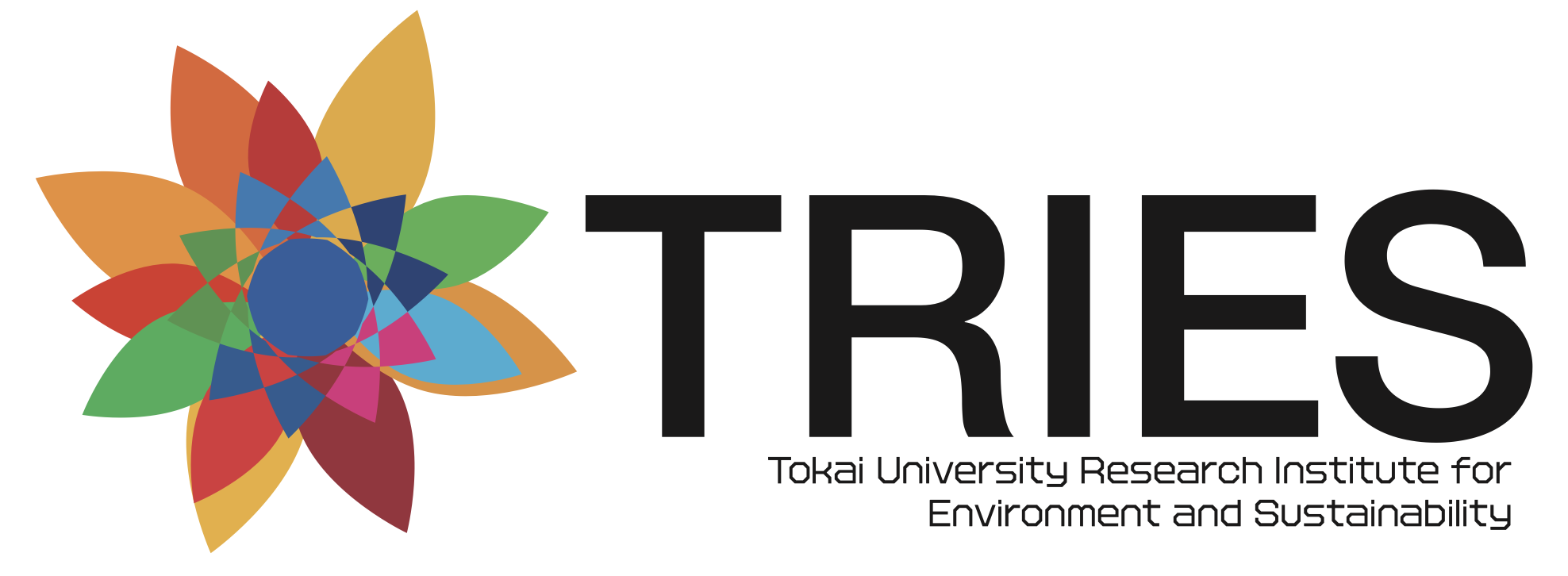The relationship between real GDP and the amount of industrial waste generated in Japan
04/012023
Author: Eiji Hosoda
The amount of industrial waste is considered to be correlated closely with GDP, since, in most cases, more waste is generated as industrial activities become accelerated. Although this should be true in the short run, it is not clear in the long run; an economic structure possibly changes as time passes, so that the relationship between GDP and the amount of industrial waste may not be the same as before.
Let us see the figure. Roughly speaking, the strong correlation between real GDP and the amount of industrial waste can been seen from 1990 to 1999 (time period A), and 2000 to 2009 (time period B) respectively. The correlation does not seem so strong from 2010 to 2019 (time period C). Throughout all the time periods, however, such a correlation cannot be read any more. Comparing time periods A and C, or time periods B and C, we may be able to say that a negative relationship holds between real GDP and the amount of industrial waste.

What happened in these time periods? After the so-called bubble boom ended in 1990, Japanese economy gradually recovered, and entered into a moderate-growth period in a stumbling way (time period A). At the end of 2000, the so-called IT bubble burst, and Japan suffered from recession. After struggling for a few years, it began to grow again, although the growth rate was very low around 2% (time period B). Then, a world-shaking event happened: the big financial crisis triggered by the collapse of Lehman Brothers. As shown by the red arrow in the figure, both GDP and the amount of industrial waste drastically decreased. Since then, the amount of industrial waste did not respond to GDP so intensely as before (time period C).
Looking at the content of the activities among the selected organizations reveals that they were not necessarily started in response to the adoption of the SDGs; in some cases, overseas activities that have been conducted continuously since the 1980s were evaluated. In other words, the government is not emphasizing the promotion of the Global Goals themselves, which were adopted in 2015, but rather attempting to promote the areas set forth within them.
Apparently, some structural changes occurred in these time periods insofar as the relationship between GDP and the amount of industrial waste is concerned. For promoting a circular economy in Japan, we have to know how these changes occurred. A rigorous empirical analysis remains to be made.
